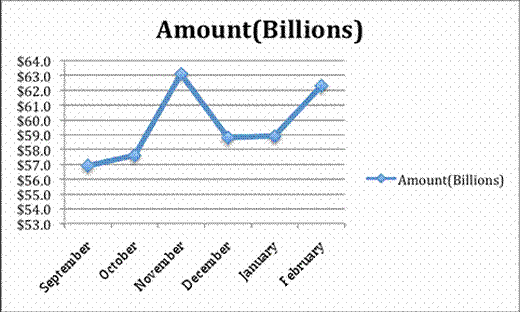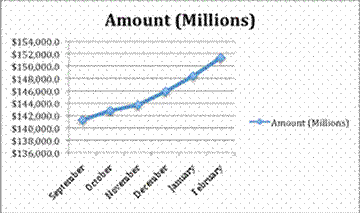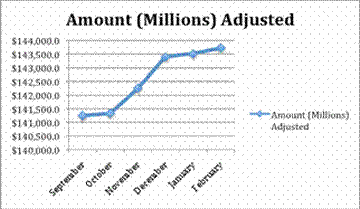Falling US Dollar and Trouble with the Trade Deficit
Economics / US Economy Apr 11, 2008 - 11:09 AM GMTBy: Andy_Sutton

 Ever since the falling dollar really hit the radar screen of the mainstream media, one predictable, knee-jerk response was that this would be a miracle elixir for our ailing export economy. Further, they asserted, the weak dollar would cure the trade deficit. This is a prime example of what happens when textbook logic is used in place of reality. I dedicated the second edition of Economic Myth Busters back in September 2007 to the absurd notion that the weak dollar was good for the American economy. In the 6 months since the article some notable trends have developed.
Ever since the falling dollar really hit the radar screen of the mainstream media, one predictable, knee-jerk response was that this would be a miracle elixir for our ailing export economy. Further, they asserted, the weak dollar would cure the trade deficit. This is a prime example of what happens when textbook logic is used in place of reality. I dedicated the second edition of Economic Myth Busters back in September 2007 to the absurd notion that the weak dollar was good for the American economy. In the 6 months since the article some notable trends have developed.
The falling Dollar
As the below chart depicts, the Dollar has fallen constantly – almost without fail for the past 6 months. Every rally has been sold. In fact, the chart is now wrapping up a nearly perfect symmetrical triangle, which bodes well for a big move. Unfortunately, that move is likely to be down.

In the 6 months covered in the chart, the Dollar has lost 7.69% of its value versus the basket of currencies measure in the Dollar Index. There were 3 significant attempts to rally, each of which was sold rather decisively. Following the generally accepted logic, this should have set the stage for the dramatic reduction of the trade deficit through a significant increase in America's export business.
What actually happened – Trade Deficit
Over the past 6 months, the trade deficit, in fact, has not gone away. In fact, the deficit has actually gotten bigger. This nagging little bit of non-cooperation on the part of the statistics has largely been blamed on the skyrocketing price of oil. We'll examine that in more detail later. Below is the chart with trade deficit data for the same six months as the dollar chart above:

Clearly, an uptrend is in place here even though this shouldn't be the case if the falling dollar is helping the trade situation. In fact the trade deficit actually increased 9.49% over the six-month period shown in the chart above. Broken down, the $62.3 Billion deficit in February 2008 means that as a country we had to borrow $2.15 Billion each DAY to pay the portion of our trade bill that we couldn't cover with exports. For comparison, last September, we had to borrow a mere $1.9 Billion per day. The weakening Dollar isn't making this situation better; as we'll explain in detail later, it is making it worse.
What actually happened – Exports
American exports have increased somewhat during this time, but when those numbers are adjusted for the lower Dollar, the increases become much less meaningful. This is to say that while the dollar amount of goods (nominal value) exported has gone up, the actual amount (real value) of goods and services exported has been far more constant. We just aren't seeing the big increase in exports that was expected by most Wall Street and Washington economists.


One of the biggest problems with the theory that a weaker Dollar automatically translates into increased exports is the fact that many of our export businesses have already been dismantled and the ruins sold for scrap. Or worse yet, those companies have packed up and moved overseas and now in effect, compete with existing American manufacturing businesses. In either case, our manufacturing machine is running a few cylinders short right now. Rebuilding that will take time, an understanding of the problem, and the desire to fix it. Currently, we seem to be lacking in all three areas.
What happened – Import and Export Prices


A weaker Dollar means that more Dollars are needed to get the same amount of goods and services. This results in the prices of imports going up. However, domestic inflation puts pressure on the costs of exports as well since it costs companies more to make their products. This erodes some of the ‘advantage' of the weaker Dollar. Higher import prices hurt Main Street Americans because most of the goods we purchase, particularly consumer goods, are imported. The jumps in import prices have been staggering, generally followed by a month of little or no change as the depicted in the chart above. The important point here is the once the gains in price are realized, they don't go away. Consumers have been getting a double dose of higher price from food and gasoline alone. Throw in rapid increases in the price of imported consumer goods and it only puts more pressure on average Americans.
As former President Jimmy Carter said so eloquently, “Inflation is a bunch of mysterious things working in mysterious ways.” There really isn't anything mysterious about it. America didn't begin running trade deficits until the final decoupling from the gold standard in 1971. We have been inflating ever since. We are now reaping the whirlwind from those decisions.
We now have six months of evidence to support the assertion that a weaker Dollar isn't helping our trade deficit even though exports have risen in nominal terms. Many blame oil for this, saying that if only the price of oil was cheaper, that our trade deficit would shrink. Why is it exactly that the price of oil continues to rise? One component of the price of oil is certainly the value of the Dollar. The less the Dollar is worth, the more Dollars will be required to get that oil. Hence, the ‘price' of oil and other imports will continue to rise, which will continue to exacerbate our trade imbalance moving forward.
The truly amazing thing is that this is not just a problem for the US Dollar. Foreign Central Banks are scrambling to reign in the appreciation of their own currencies. Nobody wants to have a strong currency. Why is this? In this regard, the world has come full circle. We used to compete for superiority, but for now, it would seem that we are determined to struggle to see who can reach the bottom first.
By Andy Sutton
http://www.my2centsonline.com
Andy Sutton holds a MBA with Honors in Economics from Moravian College and is a member of Omicron Delta Epsilon International Honor Society in Economics. His firm, Sutton & Associates, LLC currently provides financial planning services to a growing book of clients using a conservative approach aimed at accumulating high quality, income producing assets while providing protection against a falling dollar. For more information visit www.suttonfinance.net
Andy Sutton Archive |
© 2005-2022 http://www.MarketOracle.co.uk - The Market Oracle is a FREE Daily Financial Markets Analysis & Forecasting online publication.


